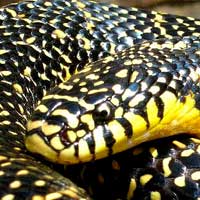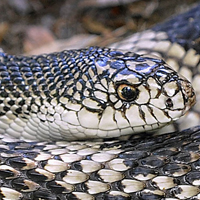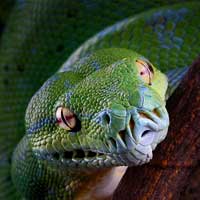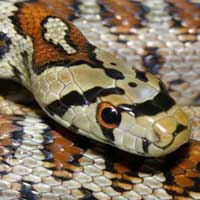The Coastal Taipan: Everything You Need to Know
The Coastal Taipan (Oxyuranus scutellatus) belongs to the Elapidae snake family, a group characterized by their fixed front fangs and potent neurotoxic venom, making it one of the most dangerous and efficient predators in its native habitats of Australia and New Guinea.
Scientific Name: Oxyuranus scutellatus
Snake Family: Elapidae

What Makes the Coastal Taipan Unique?
The Coastal Taipan (Oxyuranus scutellatus) is one of the most venomous snakes in the world, native to coastal regions of Australia and New Guinea. Renowned for its speed, accuracy, and potent venom, this snake is a true apex predator. Despite its dangerous reputation, the Coastal Taipan is a fascinating species that plays a crucial role in controlling rodent populations within its ecosystem.
Where Does the Coastal Taipan Live?
The Coastal Taipan thrives in a variety of habitats, ranging from tropical forests to open grasslands. Key habitat characteristics include:
- Geographic Range: Found along the northern and eastern coasts of Australia, as well as in New Guinea.
- Preferred Environments: Sugarcane fields, woodlands, and rainforests.
- Climate: Warm, humid conditions with abundant prey availability.
These adaptable snakes are often found near human settlements where food sources like rodents are plentiful. However, they are more commonly associated with remote, undisturbed habitats.
| Habitat Feature | Description |
|---|---|
| Geographic Distribution | Australia and New Guinea |
| Preferred Terrain | Tropical forests, grasslands |
| Climate | Warm and humid |
What Does the Coastal Taipan Eat?
The Coastal Taipan is a carnivorous predator that feeds primarily on small mammals. Its diet consists of:
- Primary Prey: Rodents such as rats and mice.
- Occasional Prey: Birds and small marsupials.
- Hunting Method: Uses a rapid strike and injects highly potent venom to immobilize prey almost instantly.
This snake’s role in controlling rodent populations makes it a vital species in maintaining ecological balance in its habitat.
Understanding the Behavior of the Coastal Taipan
The Coastal Taipan is known for its intelligence and cautious nature. While not inherently aggressive, it will defend itself if provoked. Key behaviors include:
- Activity Patterns: Diurnal, most active during the day when hunting.
- Social Structure: Solitary, interacting with other snakes only during mating season.
- Defensive Tactics: Raises its body, hisses, and strikes rapidly when threatened.
Despite its reputation, the Coastal Taipan avoids human encounters and will retreat when given the chance.
Health and Lifespan of the Coastal Taipan
The Coastal Taipan has a relatively long lifespan compared to other snake species. Important aspects include:
- Lifespan: 10-15 years in the wild; up to 20 years in captivity.
- Common Health Concerns: Parasitic infections and injuries from predators or prey.
- Predators: Birds of prey, monitor lizards, and feral cats can pose threats to juveniles.
In captivity, proper care and a controlled environment can significantly extend the Coastal Taipan’s lifespan.
How Does the Coastal Taipan Reproduce?
Reproduction in the Coastal Taipan occurs seasonally, typically during spring and summer. Key details include:
- Mating Season: Spring and early summer.
- Clutch Size: 7-20 eggs, depending on the size and health of the female.
- Incubation Period: Eggs hatch after 60-70 days.
- Hatchling Behavior: Juveniles are independent and fully venomous from birth.
This reproductive strategy ensures the survival of the species in its challenging environment.
Safety Tips for Handling the Coastal Taipan
Handling the Coastal Taipan requires expertise and extreme caution due to its potent venom. Key safety tips include:
- Always use appropriate tools such as snake hooks and tongs.
- Wear protective gear, including snake-proof gloves and boots.
- Ensure the enclosure is secure and escape-proof.
- Have access to antivenom and emergency medical assistance.
Only trained professionals should handle this species to minimize risks and ensure the safety of both the handler and the snake.
Disclaimer
The information provided in this article is for educational purposes only. SnakeEstate strongly advises against handling or interacting with venomous snakes, such as the Coastal Taipan, unless you are a trained and licensed professional. These snakes pose significant risks, and improper handling can result in serious injury or death. Always adhere to local regulations and prioritize safety when dealing with wildlife.








